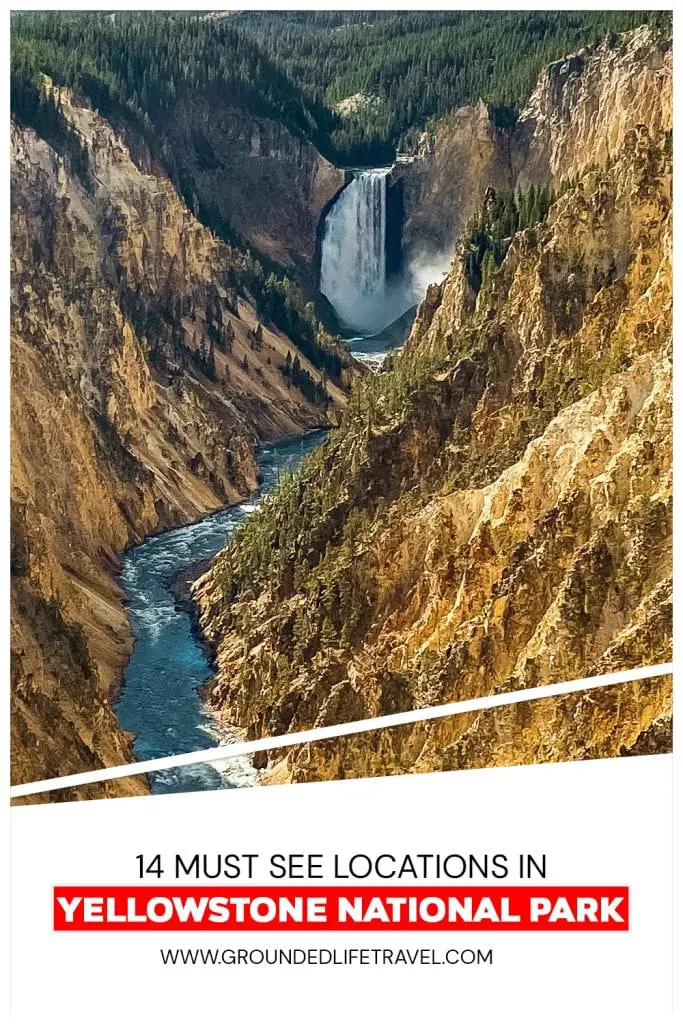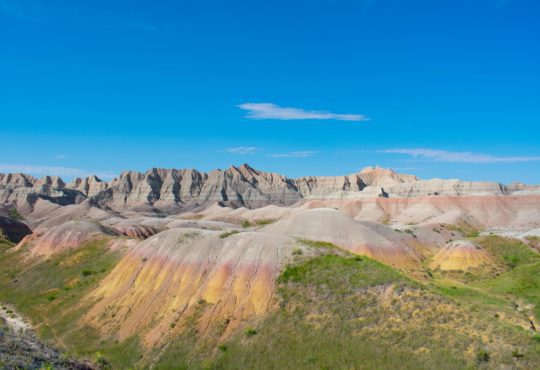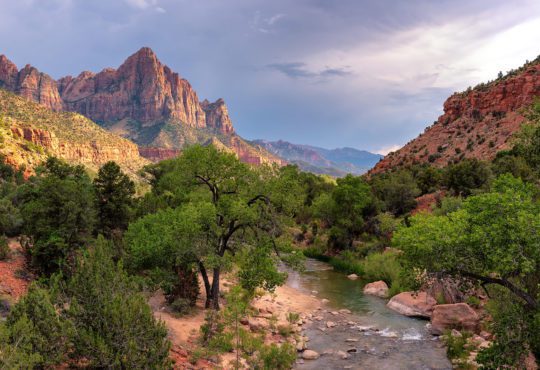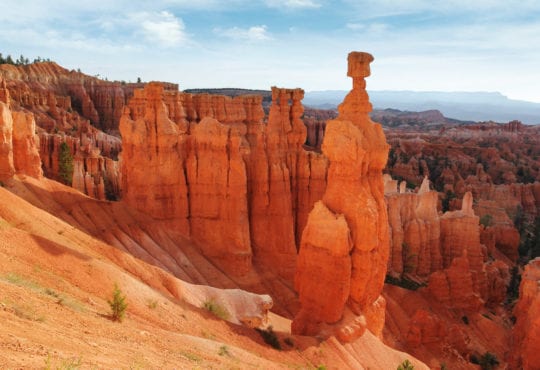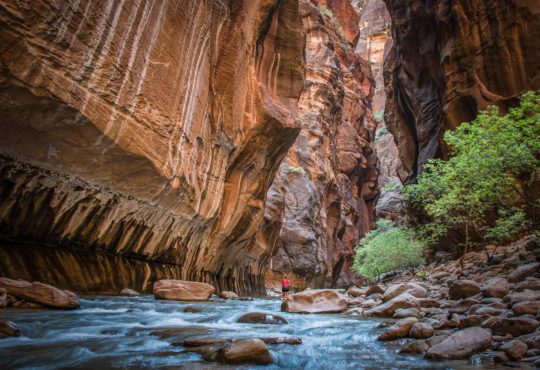Top 14 Things To See In Yellowstone National Park and How To Photograph Them
Contents
- 1 1. Drive Through Lamar Valley
- 1.1 2. Old Faithful and the Upper Geyser Basin
- 1.2 3. Grand Prismatic Spring
- 1.3 4. Driving and Hiking Grand Canyon of the Yellowstone
- 1.4 5. West Thumb Geyser Basin
- 1.5 6. Gibbon Falls
- 1.6 7. Steamboat Geyser
- 1.7 8. Norris Geyser Basin
- 1.8 9. Mammoth Hot Springs
- 1.9 10. Hayden Valley
- 1.10 11. Mystic Falls
- 1.11 12. Fairy Falls
- 1.12 13. Imperial Geyser
- 1.13 14. Yellowstone Lake
1. Drive Through Lamar Valley
Yellowstone National Park is the worlds first national park, established in 1872. At over 3,400 square miles, it is also one of the largest national parks. First time visitors are often surprised by the enormous size and amount of driving required to see everything in Yellowstone.
We are veterans of the national parks and are here to help you cut through the confusion of visiting these natural wonders. Here are the top 14 things see in Yellowstone National Park and how to photograph them.
Many people overlook the Lamar Valley because it is difficult to get to from most points in the park. If you time your visit to the area correctly, you’ll have your best wildlife viewing experience of your trip. The Lamar Valley is home to the most wildlife in Yellowstone and visiting at dawn or dusk should put you in a prime position to see herds of bison.
The best plan is to arrive about 1.5 hours before sunset and watch for the Bison to come down from the hills into the valley. They will all come down and cross the road to graze and then make the trip back up over the road again after sunset when they are done.
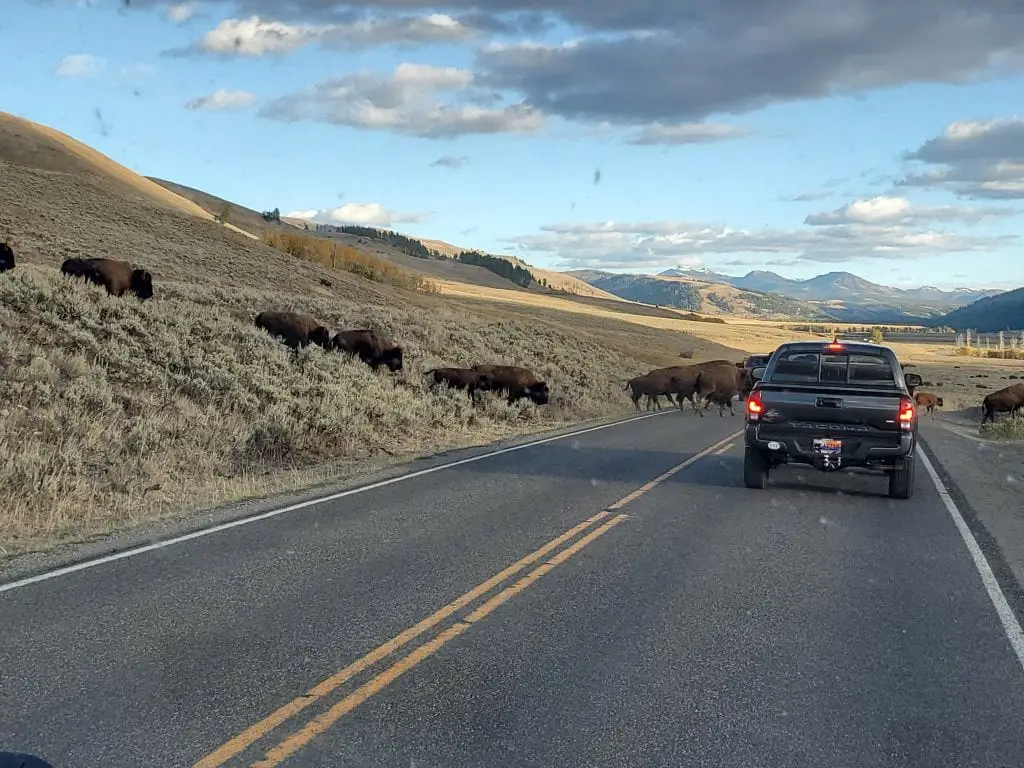
We recommend going to Lamar Valley on your first night in the park. It is a long drive and you’ll be up for a long day at that point of your trip. The advantage you’ll have visiting there first is that after seeing the magnificent wildlife in Lamar Valley you won’t be as tempted to pull over every time you see a lone bison in a field elsewhere in the park. This will save you precious time.
What We Did
We drove through the Lamar Valley at 6pm from West to East on a night where sunset was at 7:15pm. We were astounded by the amount of wildlife we saw and got to witness a stampede of bison come down the hill right in front of our car. It looked like a migration that you would see on a national geographic special.
There are also numerous pullouts that you can stop and view the wildlife from. Crowds are much lower in this part of the park so parking and traffic was never a problem.
How To Photograph Lamar Valley
I used a 35mm lens on a full frame DSLR and wished I had brought a longer lens. The 35mm was great for when the bison were right next to our car, but when they were off in the distance it was not enough. The area is so big that even shooting landscapes seemed too wide with a 35mm lens. Ideally, you’d want a 50mm lens to shoot open spaces but still be able to see the wildlife and then a 300mm or 400mm lens to get closeup shots of any animals you see.
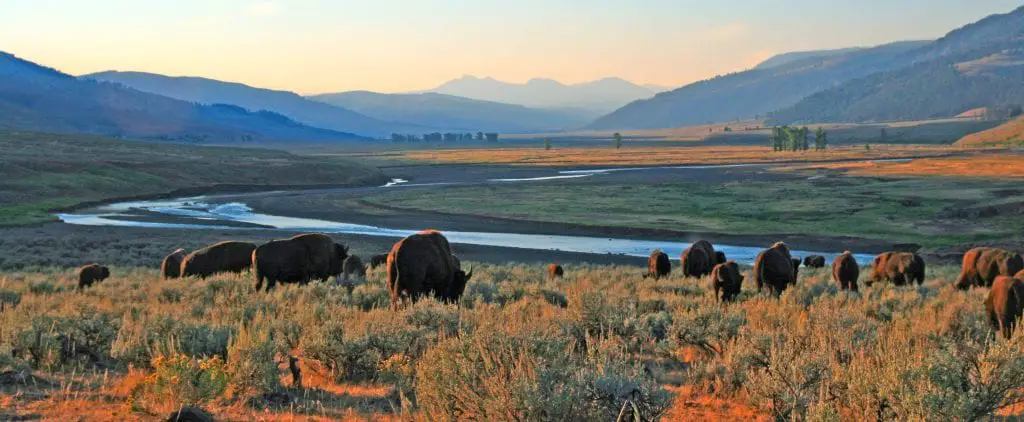
Parking In Lamar Valley
Parking is done via pullouts on the side of the road.
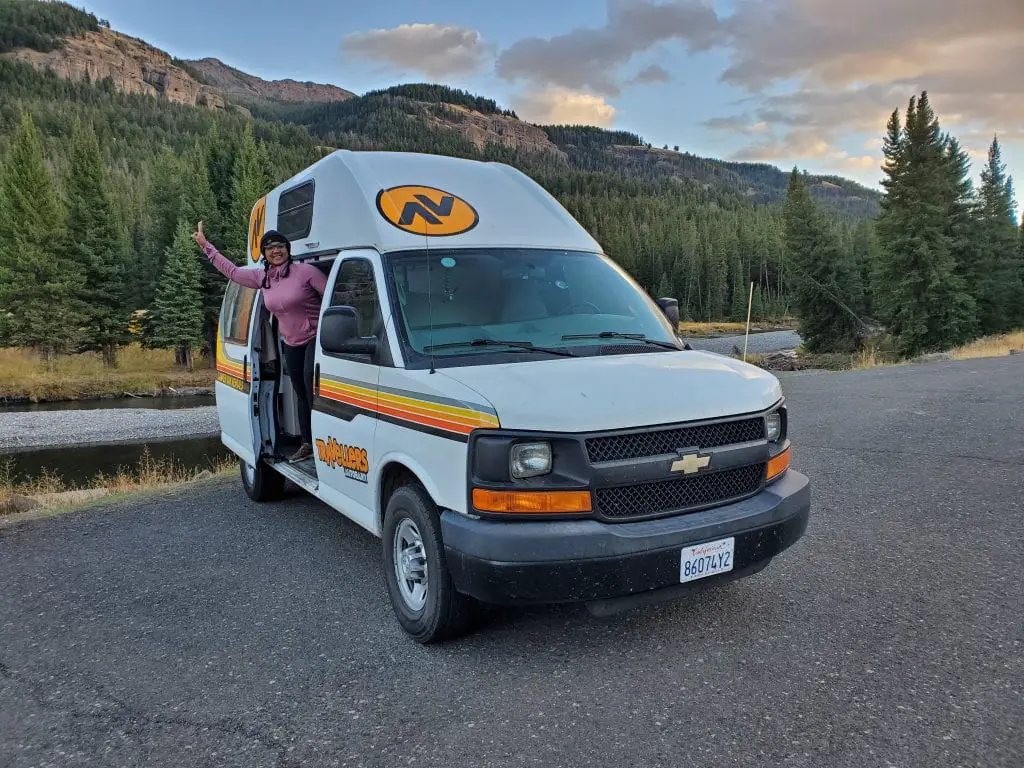
Tip: On your way to Lamar Valley watch for Elk in the Mammoth area
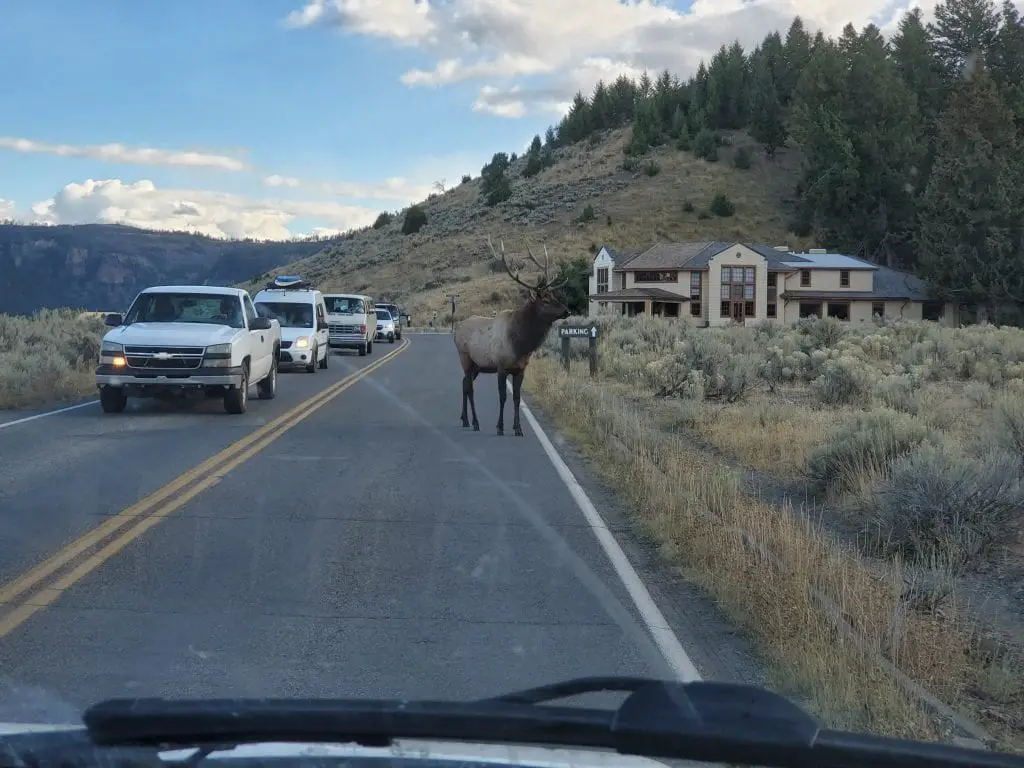
2. Old Faithful and the Upper Geyser Basin
The Upper Geyser Basin area and Old Faithful is the most visited part of the park. The area consists of Old Faithful and then a 1.5 mile boardwalk that winds though other features and ends with the spectacular Morning Glory. Within this one square mile there are over 150 hydrothermal features.It would be a mistake to simply visit Old Faithful and leave without walking though the other features.

The best thing to do is to take the fully paved straight path to Morning Glory one way and the boardwalk the other way. If you have someone with a wheelchair or stroller, they’ll be able to take the paved path both directions, but will miss some of the thermal features along the boardwalk.
The paved path serves as a shortcut that bypasses most of the thermal features but ends up in the same place as the boardwalk. Taking it one way saves time and energy. Save as much energy as you can, you will be at over 7,000 feet of elevation, and even though the walk is flat, you’ll do a lot of walking at Yellowstone. We saw wheelchairs, strollers and bikes on the paved path.
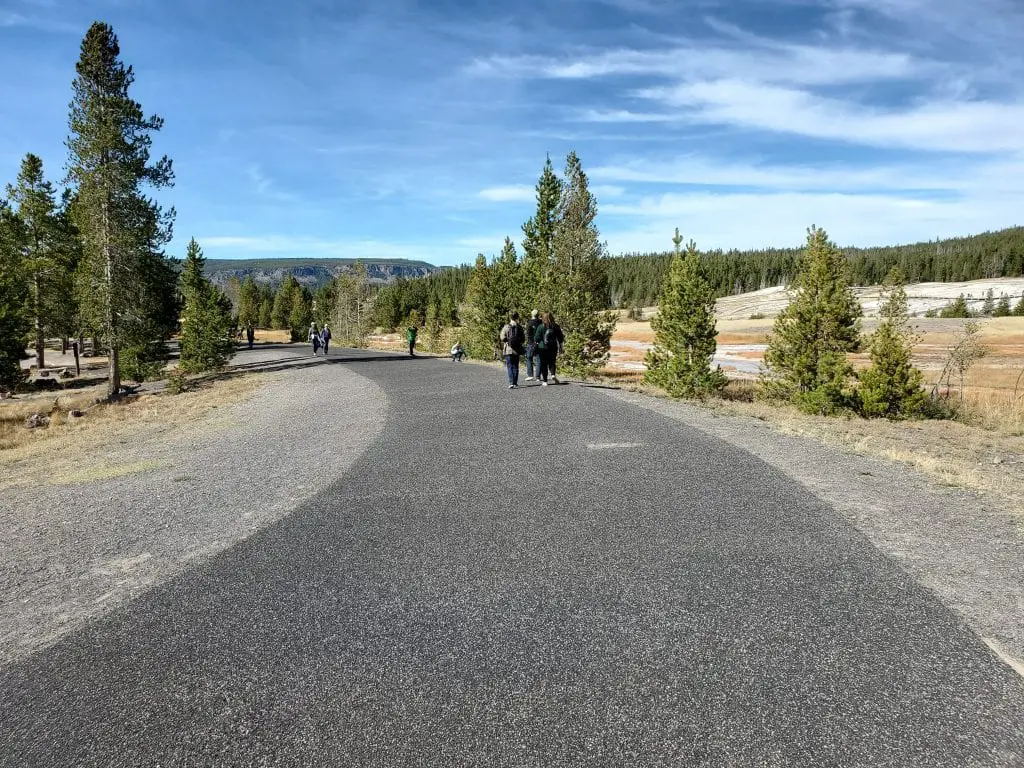
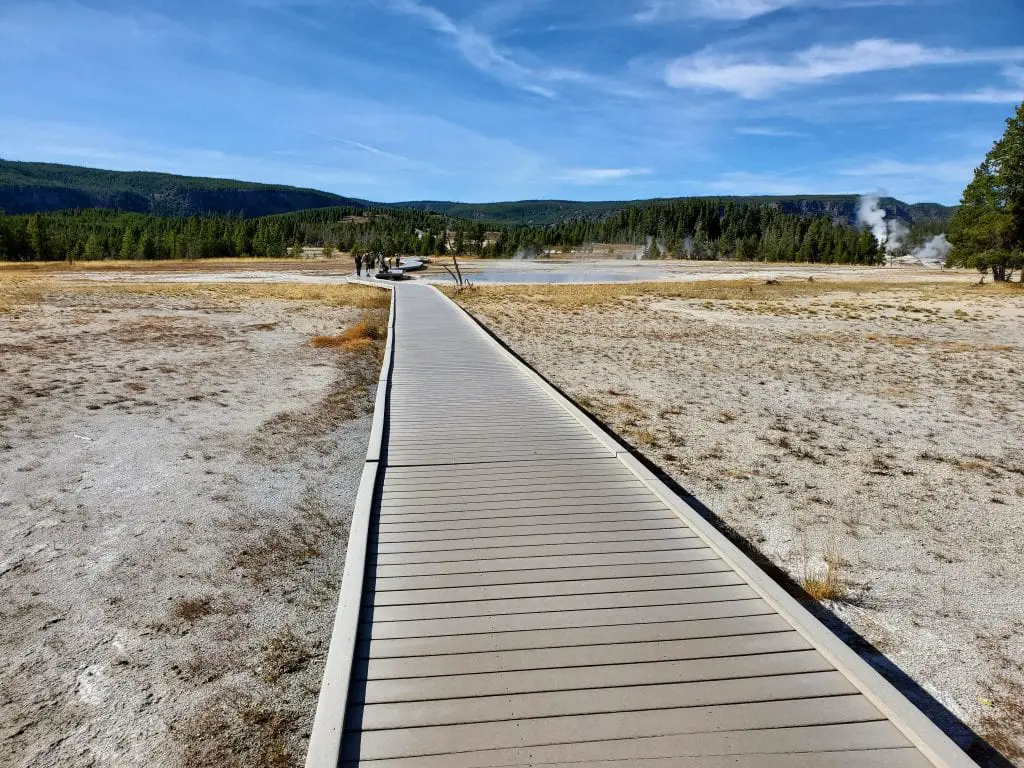
What We Did
We arrived just after Old Faithful erupted, so we walked to Morning Glory and the other geysers first and got back in time to see Old Faithful. It took us about 90 minutes to do the boardwalk and walk back to Old Faithful on the paved path.
Old Faithful can be viewed from a crowded seating area next to the geyser or you could stop and view it from the boardwalk on your way back. We choose the board walk as we liked the view.

How To Photograph Old Faithful and Morning Glory
Old Faithful is pretty straightforward. You’ll have the sun at your back anytime except early morning and a short prime of 35-50mm will suffice for your shot.
On the board walk you’ll want a 15mm lens (full frame) to capture all of the features. You’ll be able to get pretty close to them and a longer lens will mean you won’t get the entire feature in your shot. There is really only one place to stand when shooting Morning Glory that allows you to get the whole pool in without getting any of the viewing platform. You’ll be facing in a northwest direction at that spot. With a 15mm lens you’ll get the sun in your shot if you wait too late in the day. The middle of the day or morning would be a great time to be there. A cloudy day could help with the sun, but it could also make the pools less vibrant. Aim to go at the right time on a sunny day.
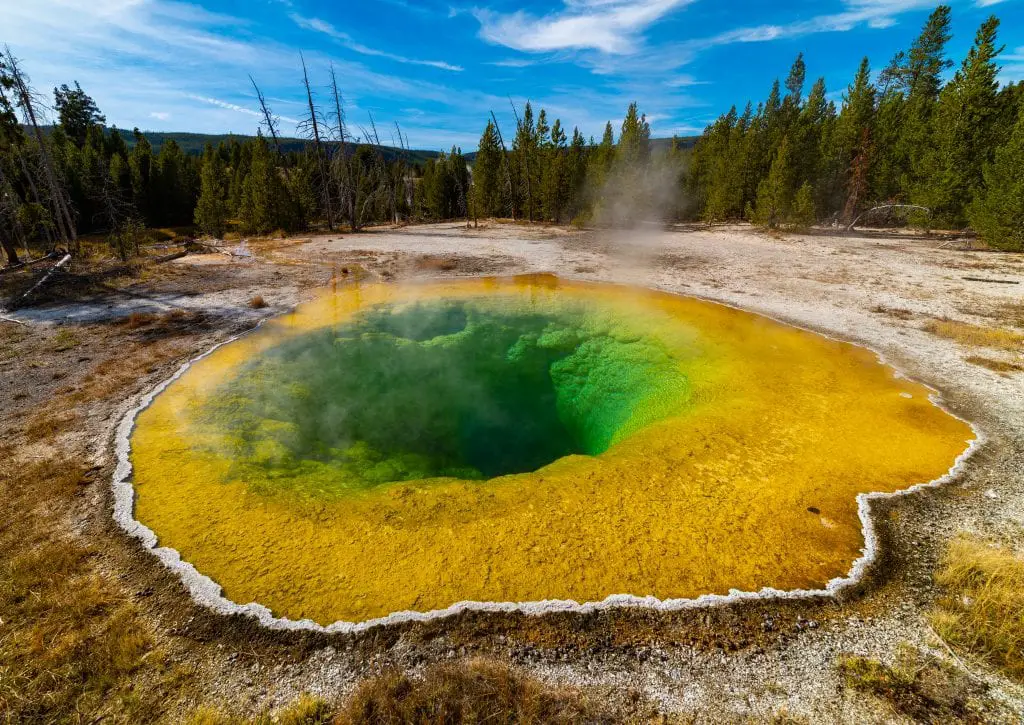

Parking At Old Faithful
Parking is plentiful at Old Faithful. It was the one place we had absolutely no trouble finding a spot and we showed up at the busiest time, during an eruption. After each eruption the lot empties out. There is plenty of space for an RV.
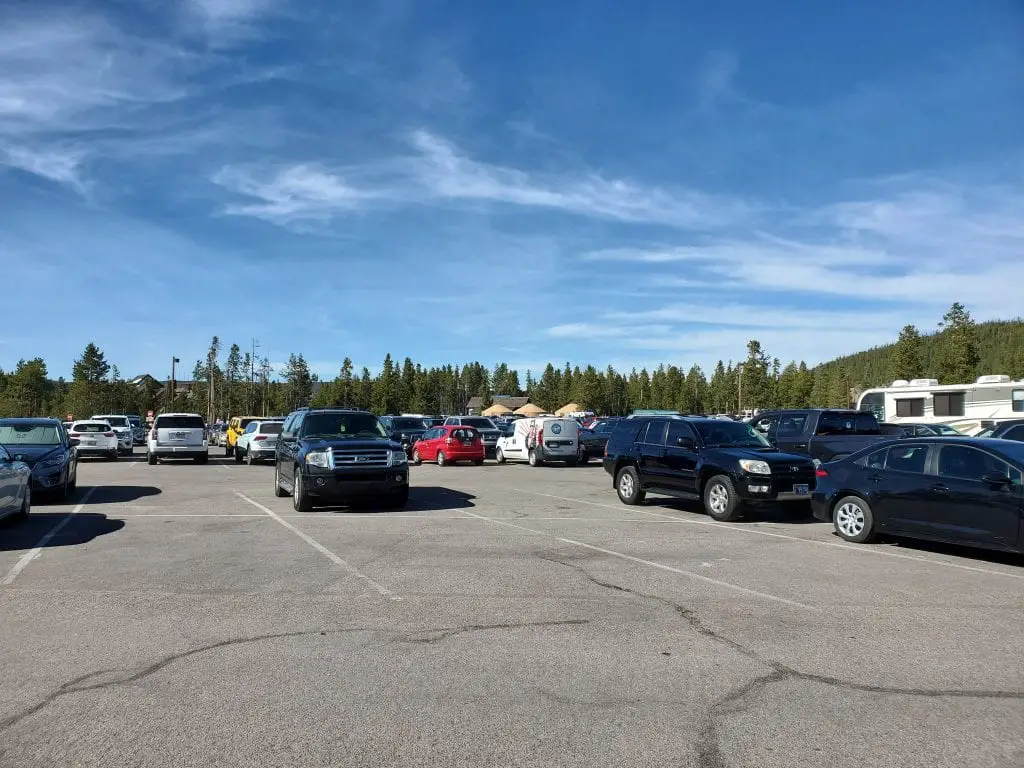
Hiking The Upper Geyser Basin
Old Faithful is just off the parking lot. The Upper Basin boardwalk is a 1.5 mile walk through the geysers. It is flat and you are walking on wooden planks. There is also a paved path that leads straight to Morning Glory and bypasses the other geysers. To save time you should take the boardwalk out and the paved path back.
Tip: You can check the eruption schedule of old Faithful and the other geysers by clicking here.
3. Grand Prismatic Spring
The Grand Prismatic Spring is located in the Midway Geyser Basin. It is the largest hot spring in the United States and the third largest in the world. It is noted for its size and colors, which match the rainbow.
You can walk right up to the edge of the spring using the boardwalk or you can take a hike and get to an overlook to see the entire spring and basin from a higher vantage point.
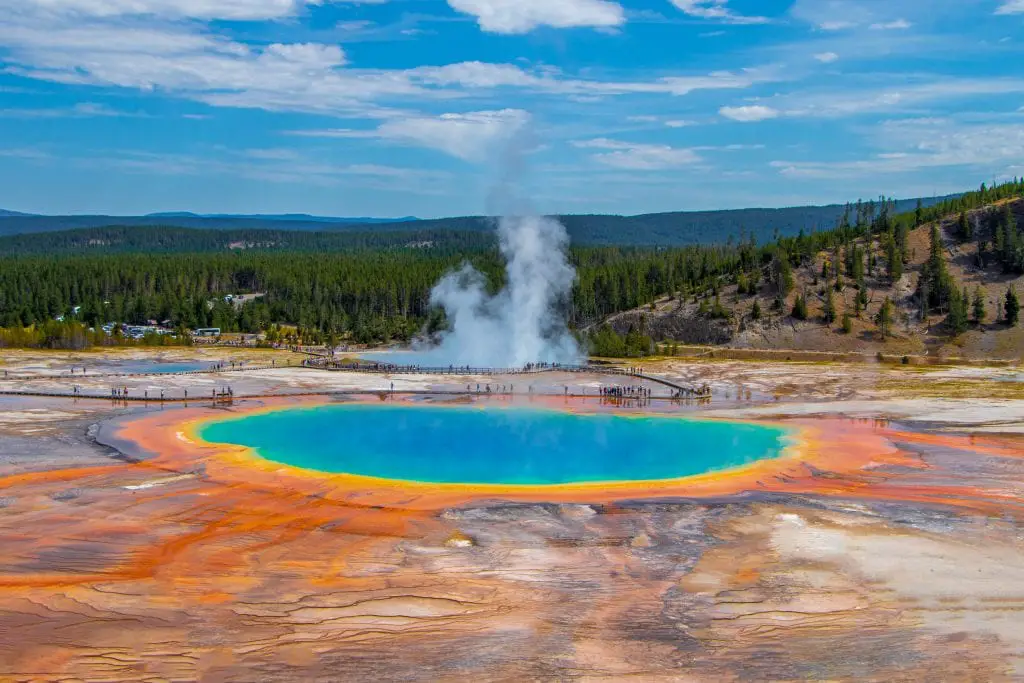
The Best Time To Visit Grand Prismatic Spring
The early afternoon on a bright sunny day is the best time to visit the Grand Prismatic Spring. The sun will light up the spring better than if you visit on a cloudy day and in the early afternoon the sun will be at your back if you are viewing it from the overlook.
The spring can be completely obscured by steam coming from it, making it impossible to get a good view. As you drive up to the spring you’ll be able to see if there are large amounts in the air around it. If so, and you have other days you can visit, we recommend coming back at another time. It is not worth the hike if you cannot see it.
What We Did
Unfortunately the Grand Prismatic Spring was obscured by steam each of the 4 days we passed by it, so on our last day we just decided to go see it.
We first drove into the parking lot for the Midway Geyser Basin and toured the boardwalk and then drove down to the parking lot for the hike to overlook, which is at the Fairy Falls Trail Parking Lot.
How To Photograph The Grand Prismatic Spring In Yellowstone
For the overlook, you’ll need to be there in the mid afternoon on a sunny day and hope for clouds in the background as well as no steam. If you wait too long, shadows from the sunset and the mountains behind you will start to cover the view. Everything went wrong for us on this one, steam, shadows, no clouds etc… here is what that would look like!
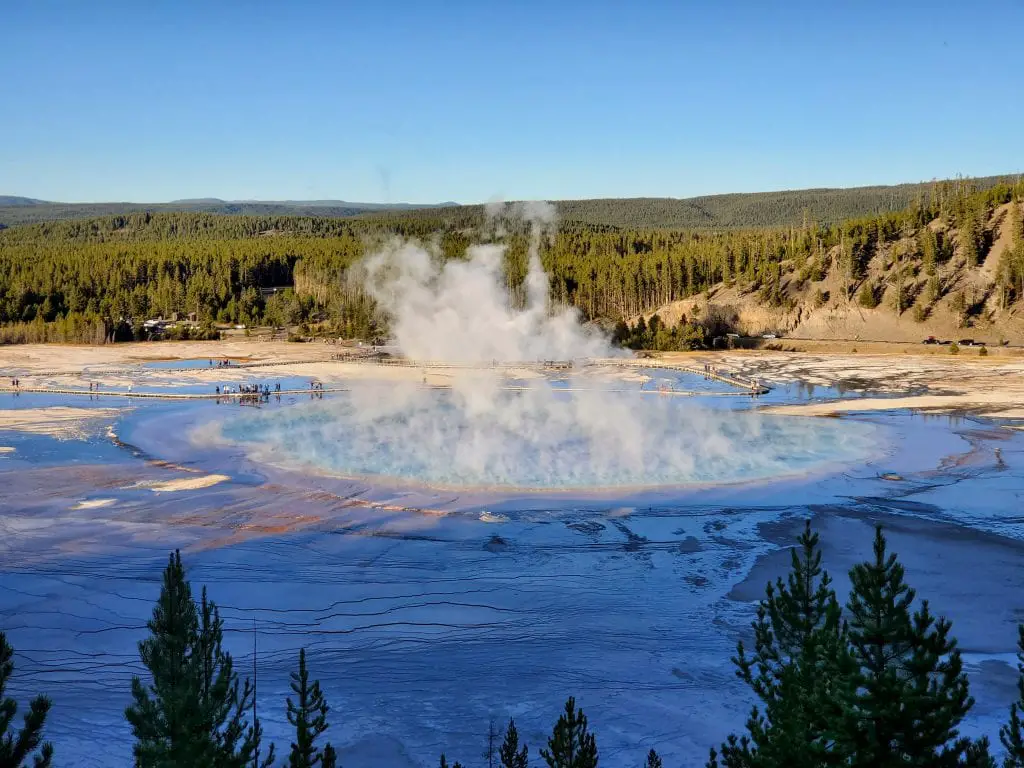
If you have a good day you’ll want a normal lens, something in the 24mm-50mm (full frame) range to capture the view. There is plenty of room at the overlook for a tripod, a gorilla pod would also work well. If you are shooting in the mid day sun though, you probably won’t need one and I question if it would be worth carrying it on your hike.
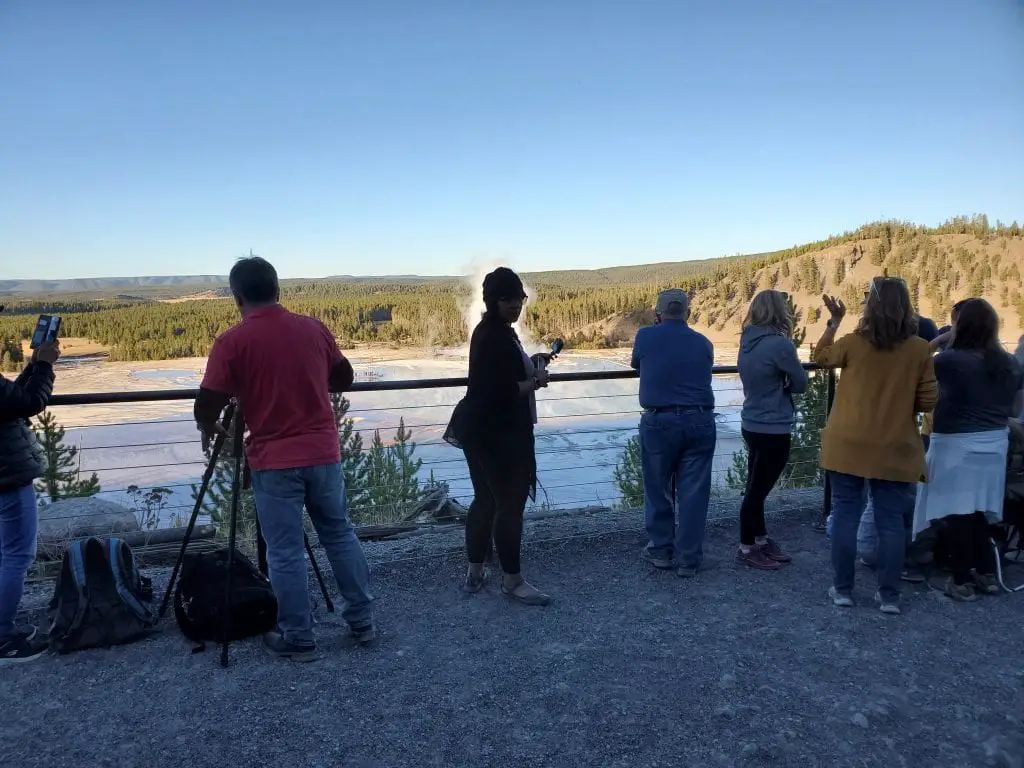
Hiking At The Grand Prismatic Spring
The spring is viewable from a boardwalk that is just off the parking lot at the Midway Geyser Basin.
The overlook for the Grand Prismatic Spring is reached via a 1.2 mile roundtrip hike that has 105 of elevation gain (all at the end). You’ll park 1 mile south of the Midway Geyser Basin at the Fairy Falls parking lot. It is not a tough hike, I even saw a guy pushing a stroller up the final hill, but I wouldn’t recommend that! He looked a little tired.
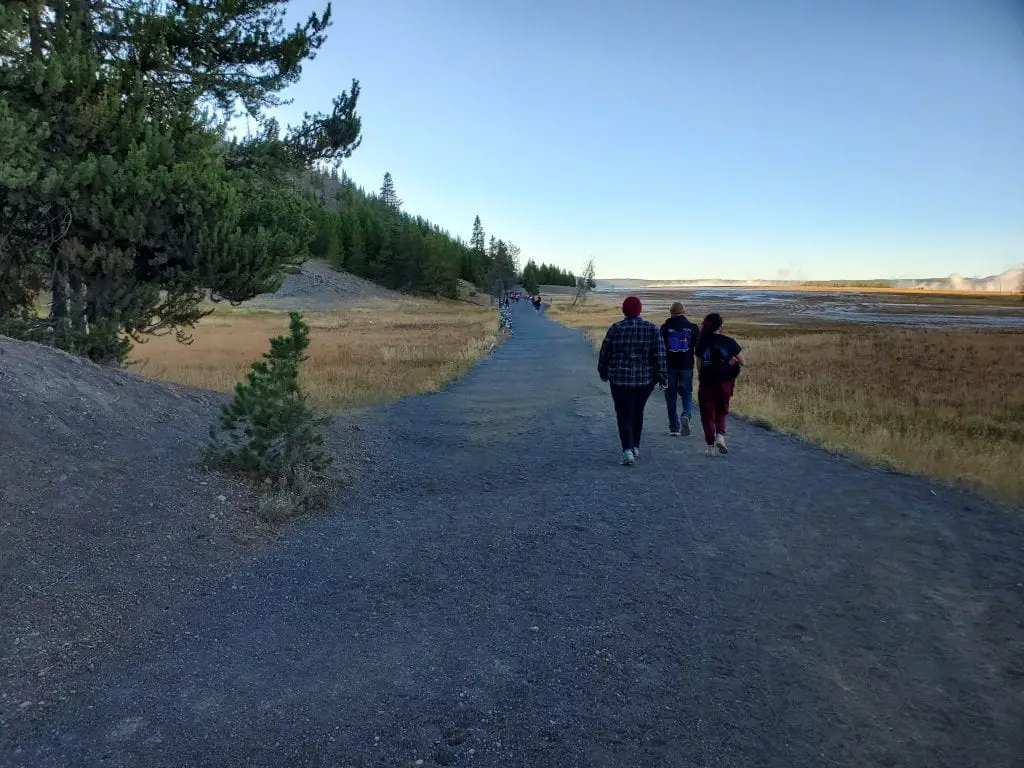
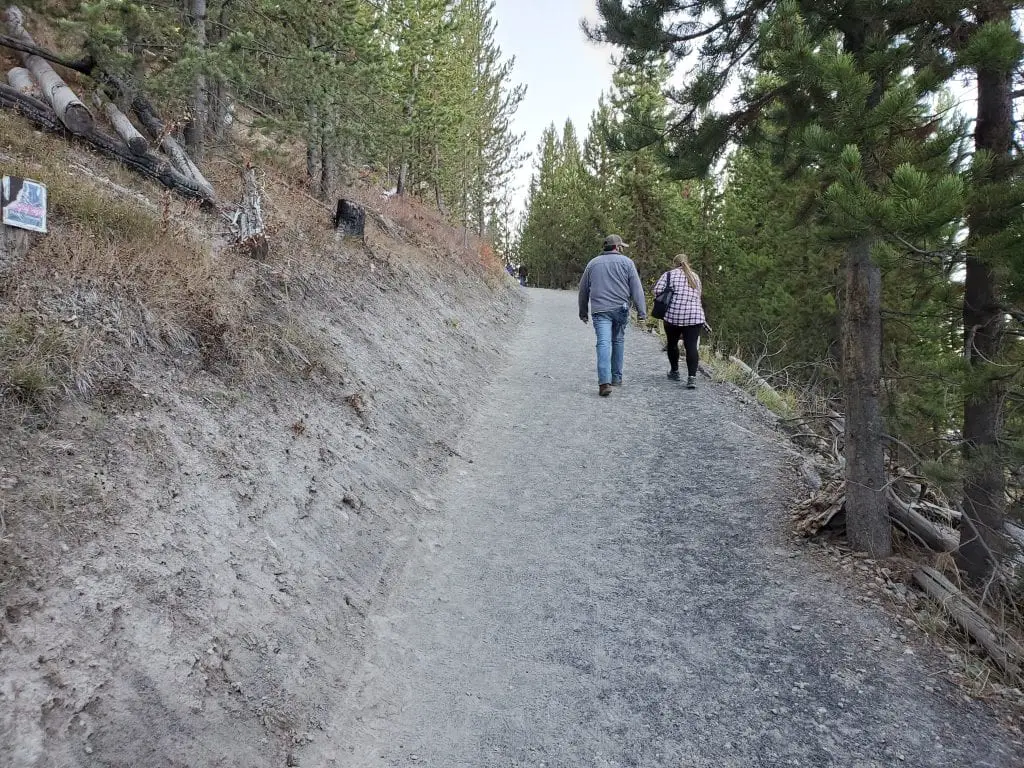
Parking At The Grand Prismatic Spring
Parking at the Midway Geyser Basin was tough, but instead of walking along the road we decided to drive into the parking lot. After waiting for about 5 minutes in the lot we were able to find parking for our camper van. There is parking for an RV but spaces are limited.
At the Fairy Falls Lot, which is where you park for the hike to the overlook, we had no trouble and there is ample parking in a dirt lot.

4. Driving and Hiking Grand Canyon of the Yellowstone
Grand Canyon of the Yellowstone is highlighted by overlooks and viewpoints which showcase the Lower Falls and Upper Falls. There are various viewpoints ranging from long hikes to views just outside your car.
If you have limited time and can only do one thing quickly, make it Artist Point on the South Rim Drive. This drive starts 2.3 miles south of Canyon Junction. The views from Artist Point are as good as any other and there is little to no hiking involved in seeing the magnificent view. Choosing this view will save time if needed.
What We Did
To save time and energy, we drove to Artist Point and took pictures after eating lunch in the parking lot. It is a very short walk to the overlook and is paved. There are a few perfect spots to take pictures of yourself with the falls in the background as well as places for landscape photography.
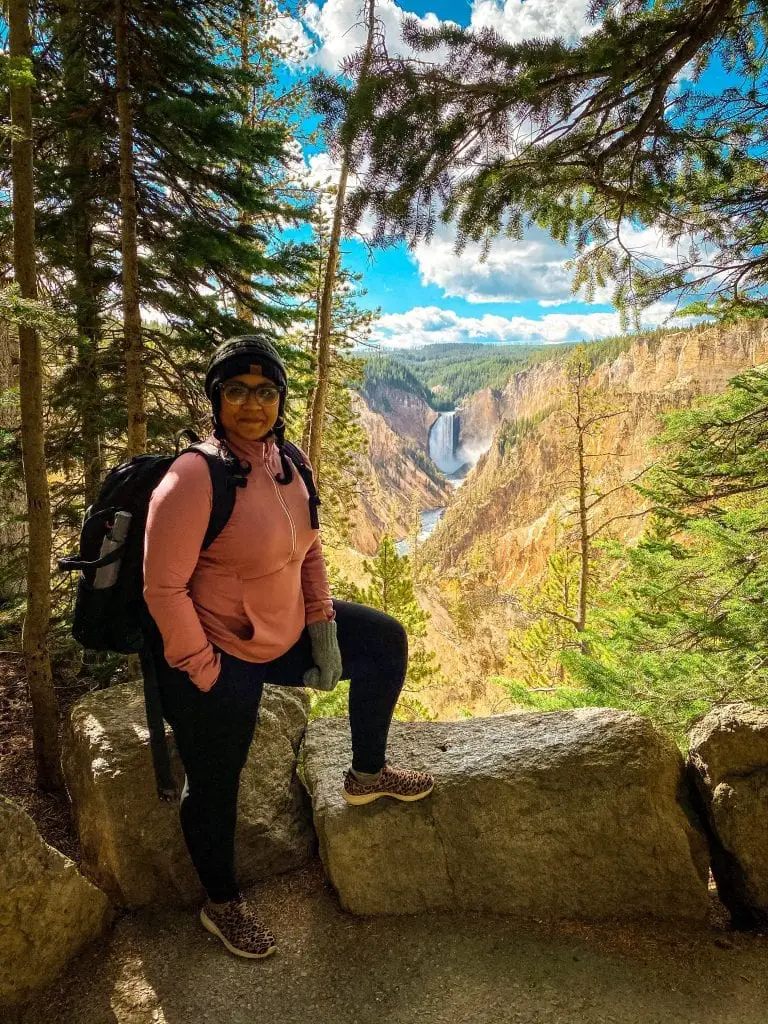
How To Photograph The Grand Canyon of the Yellowstone
You’ll be facing west as you shoot the falls, so going early in the day is ideal, or hope for clouds like we got. There are plenty of spots to setup a tripod at this location if you want to slow the shutter speed for the waterfall. You don’t really need to do that here though, as the amount of water makes even handheld shots look good. The below photo was taken by Allie with her iPhone handheld. If using a DSLR I’d recommend something wide like a 24mm if you want a view of the entire canyon or a zoom lens to crop tighter on the falls.
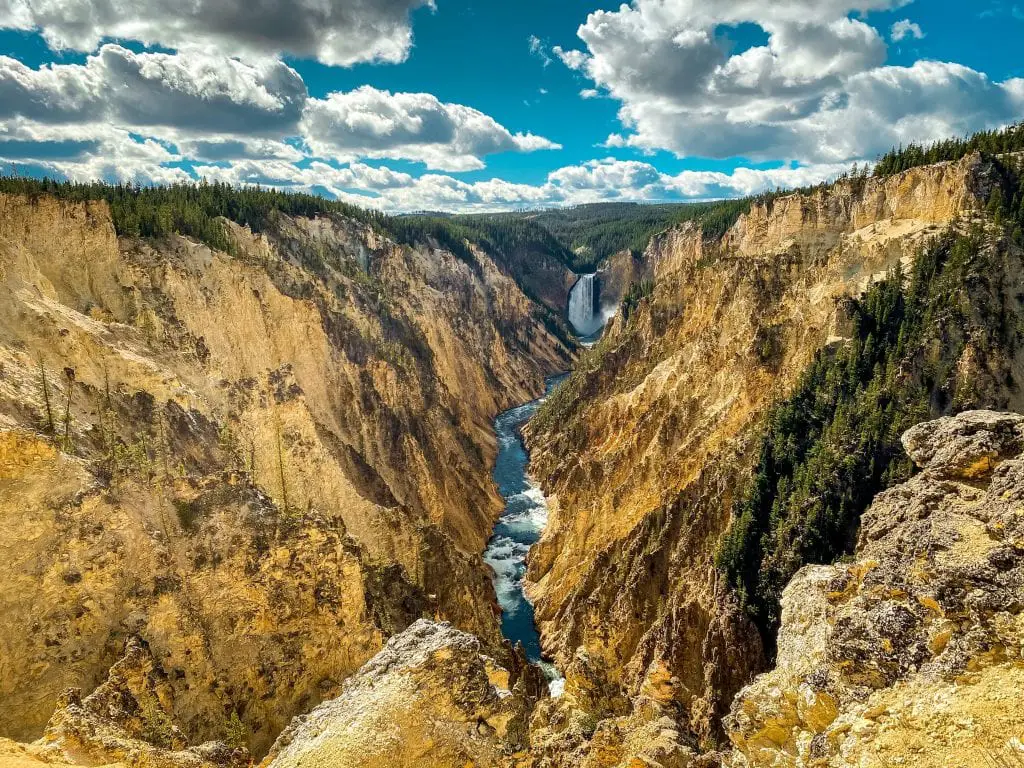
I took my photo with a DSLR at 1/6th of a second and the waterfall was pretty smooth at that shutter speed. I did have to use a ND filter to get down to that speed.
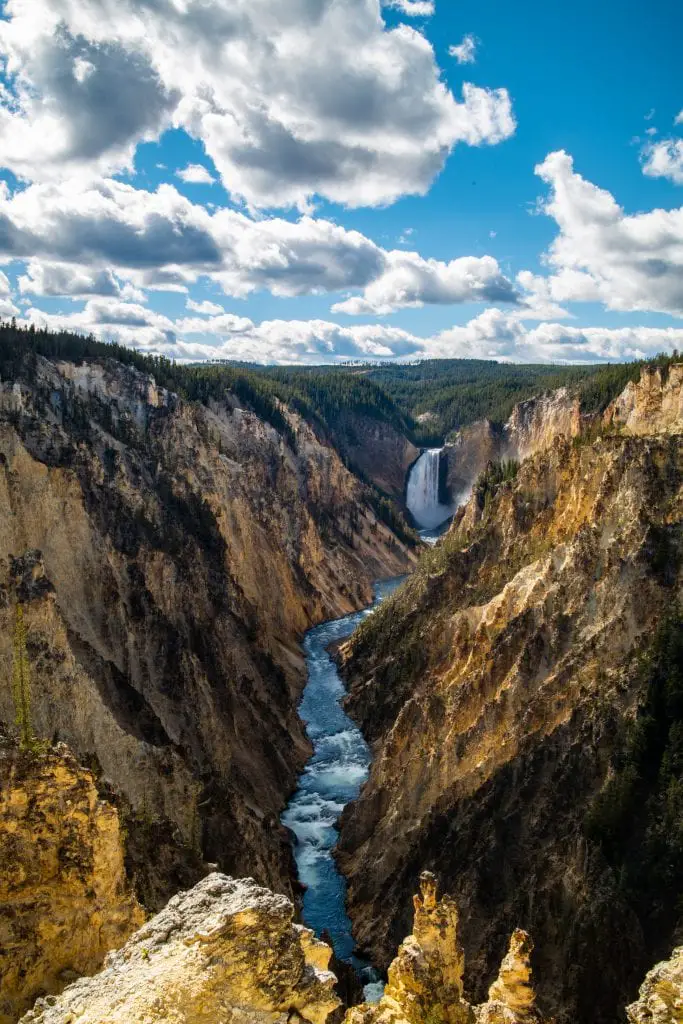
Parking At Artist Point
We had no trouble parking our camper van at Artist Point. There is plenty of space for an RV.
5. West Thumb Geyser Basin
The West Thumb Geyser basin is a series of boardwalks that take you to geysers and pools at the shore of Yellowstone Lake. Some of them are remarkable and the crowds in this area will be much smaller than in other sections of the park.

The boardwalk is easy to walk and you can go as far as you like or make an entire loop of the area. The loop is 0.6 miles long. Some of the highlights include:
Black Pool
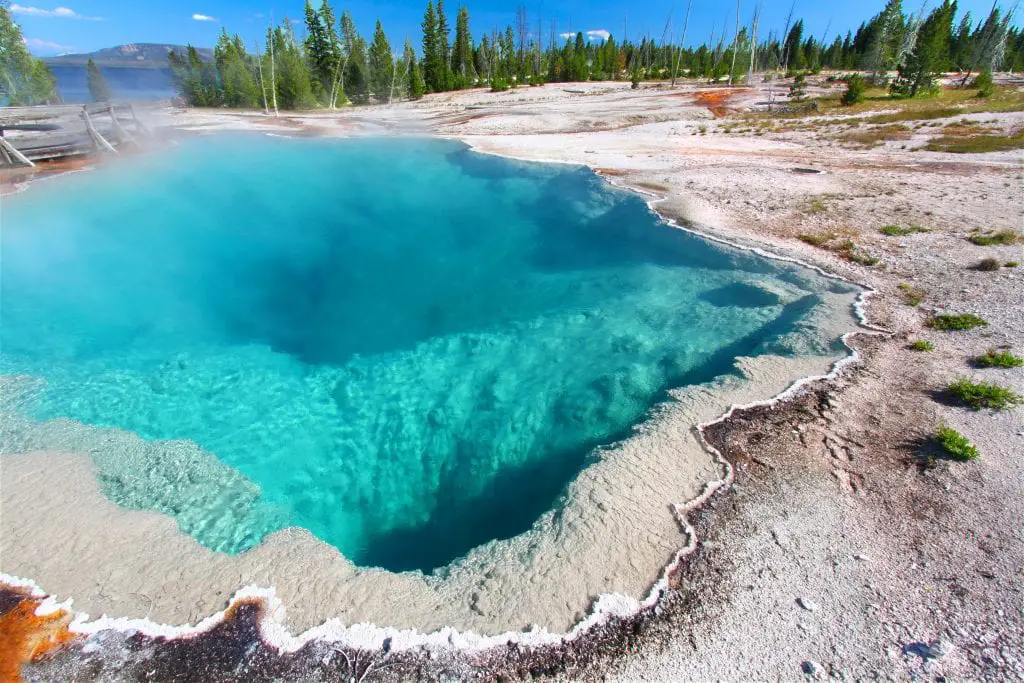
Lakeshore Geyser
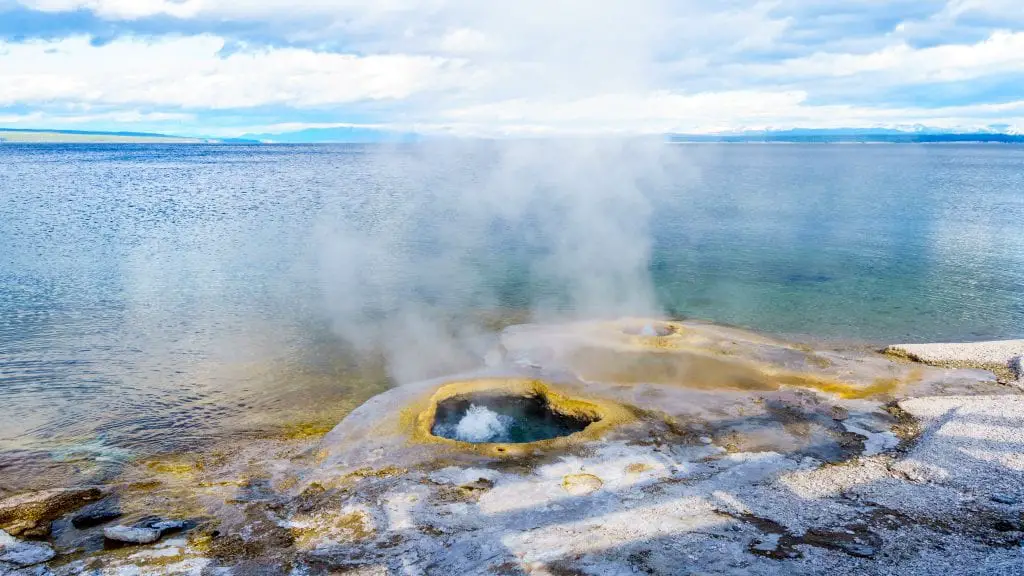
Fishing Cone
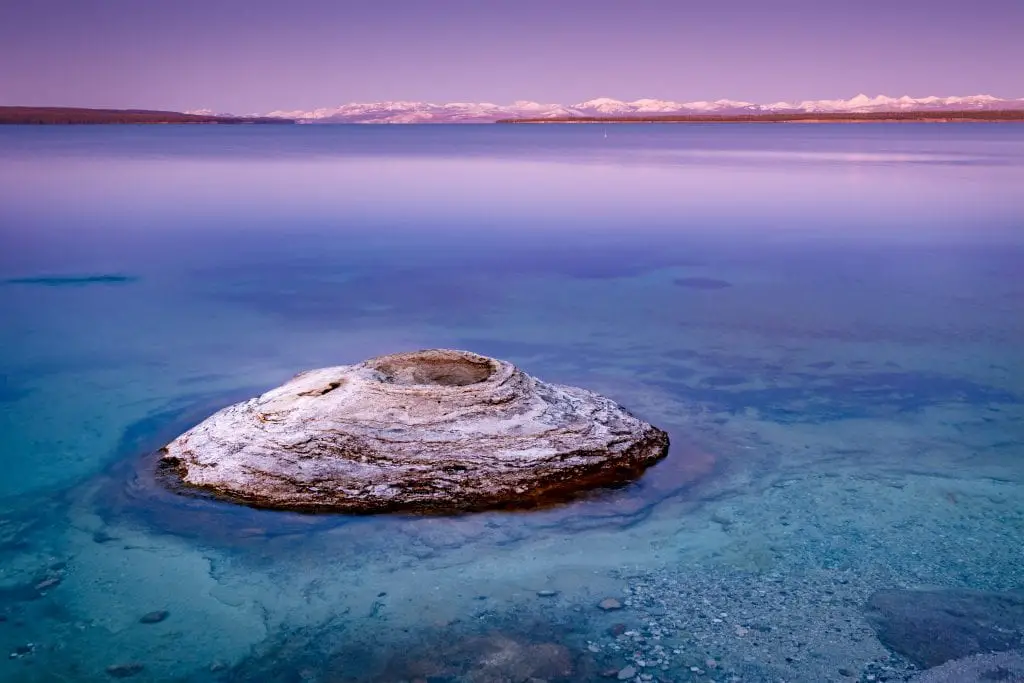
How To Photograph West Thumb Geyser Basin
You’ll want a lens as wide as 14mm up to 35mm to capture the different features of this region. As for timing, don’t wait until late in the day. While the sun will be at your back at this time, the position of the boardwalk will cast shadows on all of the features if you wait too long. Try to be there at mid day.

Parking at West Thumb Geyser Basin
Parking is plentiful for cars and RV’s. We had no trouble finding a spot as this isn’t a crowded area of the park.
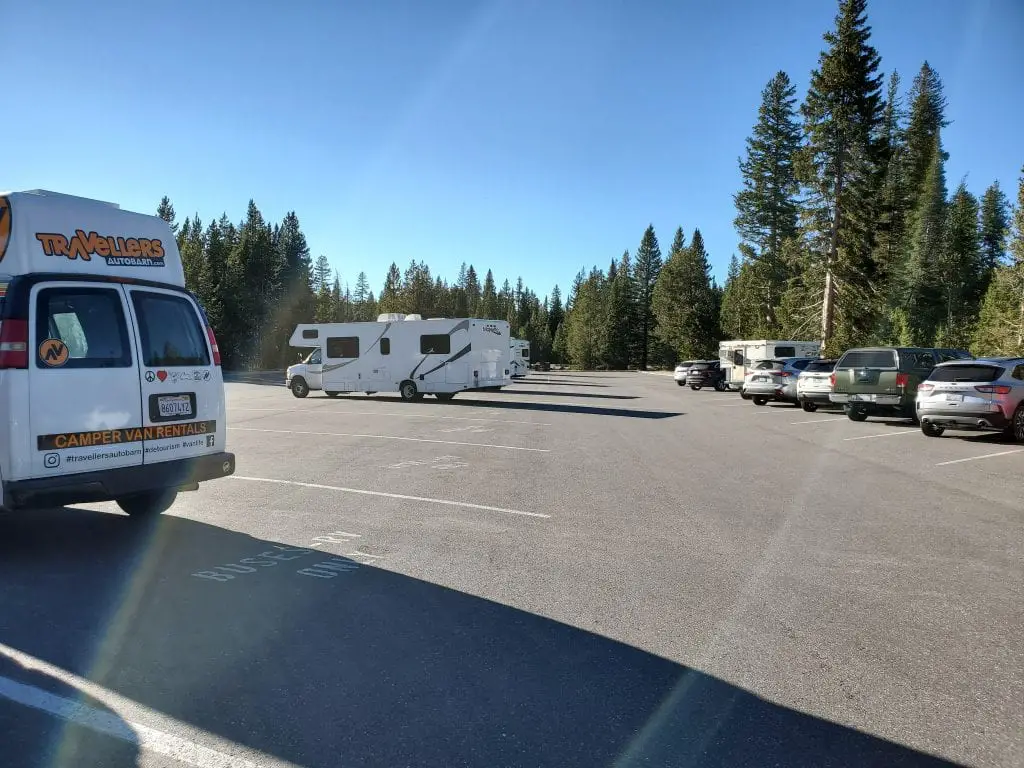
6. Gibbon Falls
Gibbon Falls is an easy stop with the view being roadside. You’ll find it in a popular area in the northwest section of the park. The falls have an impressive 84 foot drop and are surrounded by a picturesque setting.
What We Did
We stopped here on our way to Mammoth and the Lamar Valley. It was on the way from our location at the KOA in West Yellowstone. The view is roadside, but walk further south by a few hundred feet than most people will along the path to get the view in the picture below, which is the best vantage point.
How To Photograph Gibbon Falls

A 35mm lens is perfect here to capture the entire scene. You’ll want a ND Filter to so you slow the shutter speed down to about half a second and get silky water on your falls. There was a rock wall there that was easy to set my gorilla pod on. You’ll be facing northeast as you shoot so later in the day, mid afternoon is the best option. It is a great stop if you are on your way to Lamar Valley for sunset.
Parking At Gibbon Falls
There is a large parking lot which was surprisingly busy. You can see the falls from the road though, so this convinces many people to stop. We didn’t have trouble finding a spot, but it was a little busy.
7. Steamboat Geyser
Located in the Norris Geyser Basin, Steamboat Geyser is the tallest geyser in the world. It is not predictable like Old Faithful though, and could erupt at any time. You just need to be lucky to see it. This has given it the nickname of old unpredictable.

Major eruptions are rare, but can reach up to 300 feet in the air and last for 30 minutes. Smaller eruptions happen more often and will shoot 40 feet in the air. If you are there during a major eruption, you and your car could be covered in debris, as the signs in the parking lot suggest.

Even if you don’t get to see a major eruption, there is a chance you’ll get to see steam or a smaller eruption.
Parking At Steamboat Geyser
Parking is in the Norris Geyser Basin and there are separate car and RV lots. The car lot was pretty full but the RV/Camper Van lot had plenty of open space when we arrived. It is also a little farther away than the car lot, which could be good in case of an eruption.
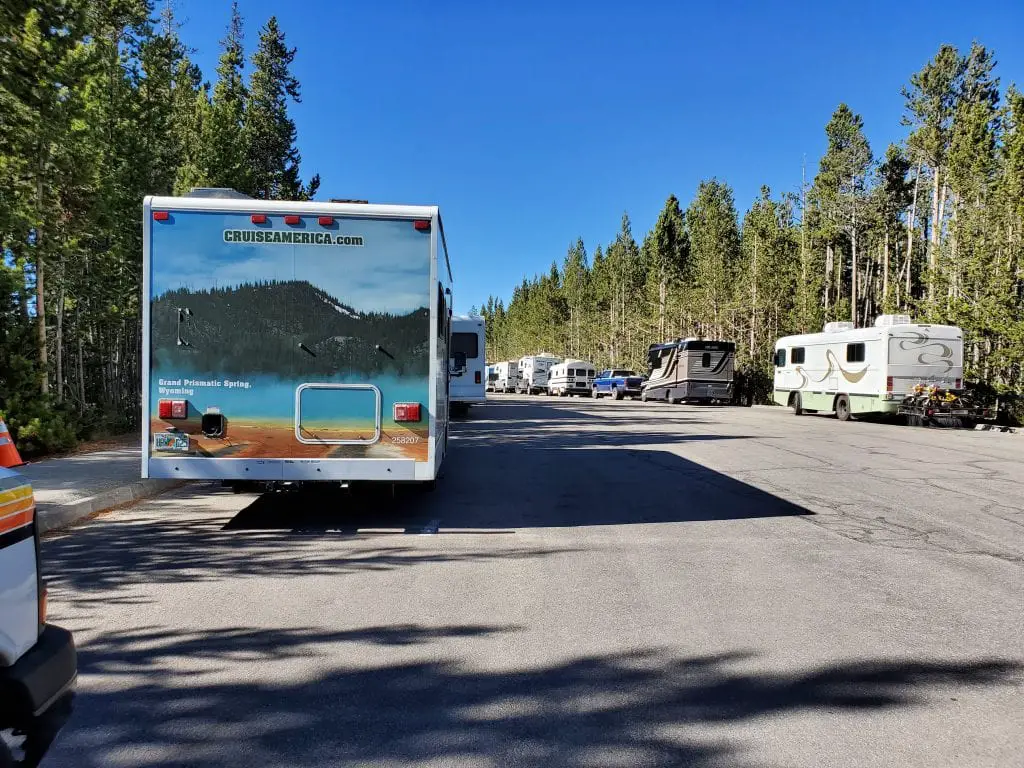
8. Norris Geyser Basin
The Norris Geyser Basin holds the Steamboat Geyser, but also is home to many other features worth visiting.
There are several hiking trails you can take over boardwalks that will walk you past everything of interest.

One of the best things you’ll see in this area is Emerald Spring. It is located on the path to Steamboat Geyser, a trail called Back Basin Trail, making it easy to reach. The entire loop is 1.7 miles, but you’ll reach these features pretty quickly and just return the way you came if you don’t want to continue on. If Steamboat Geyser has just erupted, this pool could be empty.
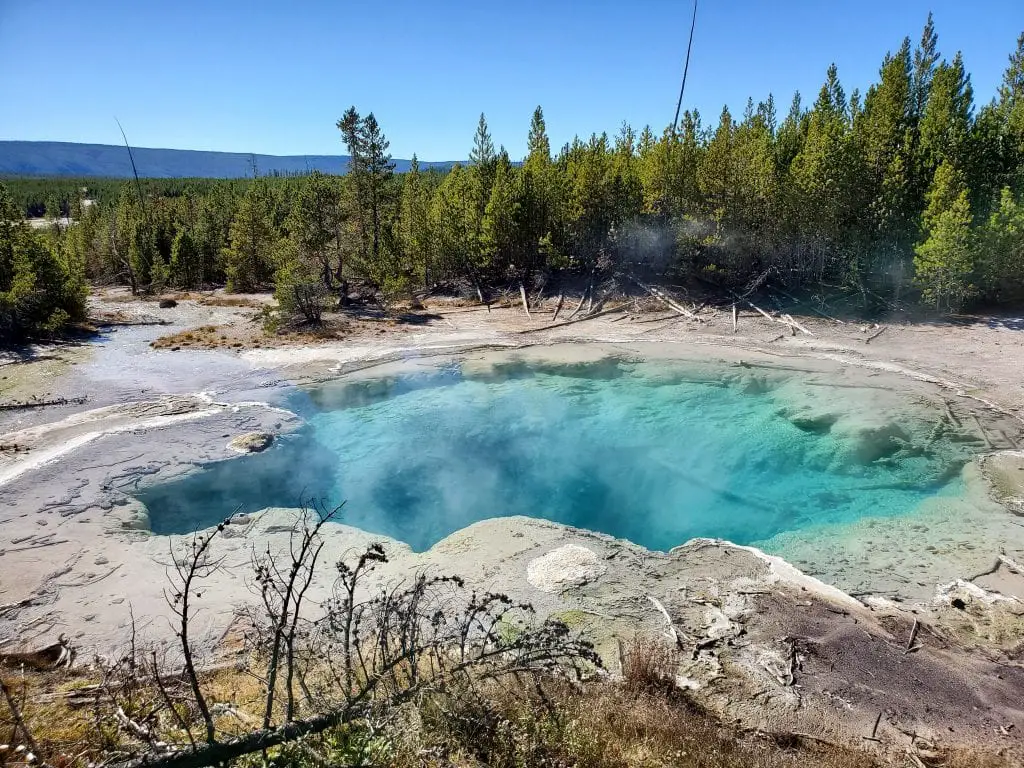
Parking at Norris Geyser Basin
Parking here can be misleading. There are overflow parking spaces on the main road that people will park in without checking if the closer lots are full. We decided to “risk it” and drive into the RV lot, which was pretty empty. It would have been quite a long walk from the main road if we hadn’t checked. It is the same lot you’ll park in for the Steamboat Geyser above.
9. Mammoth Hot Springs
Mammoth Hot Springs are found driving north towards Mammoth. Plan to visit on your way to Lamar Valley and dedicated around an hour to see everything in this area.
The Hot Springs are viewed via a series of boardwalks and terraces. Unlike many other areas, there is some elevation gain to the boardwalk.

How To Photograph Mammoth Hot Springs
You’ll want a wide angle lens to capture the springs. I used a 14mm and was able to shoot down at the springs from the boardwalk and still capture some of the sky. There will be springs on all sides so the time of day doesn’t really matter, just capture whichever side is in the best lighting.
Parking At Mammoth Hot Springs
There is not enough parking adjacent to the springs. We initially drove into the parking lot and then realized we were stuck in there. Cars were using both the entrance and the exit to enter, creating a bottleneck where you couldn’t turn around. After waiting 20 minutes we drove to the overflow lot just south of the main parking lot and parked with ease. It is a short walk to the springs down a gravel path from the overflow lot.
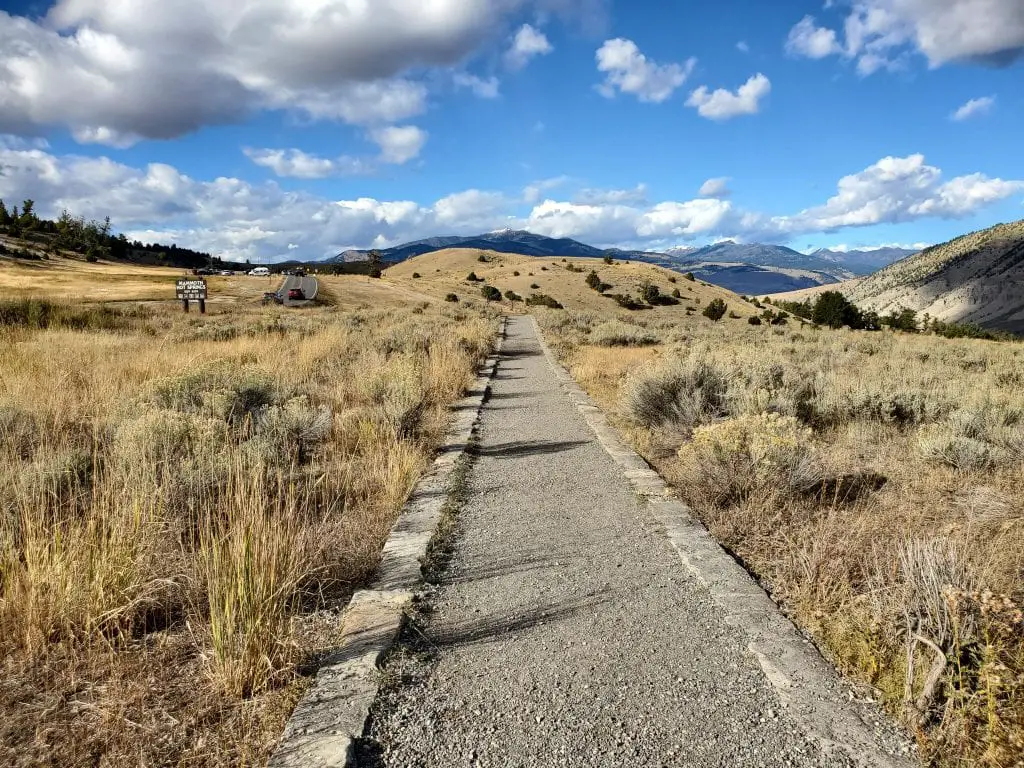
10. Hayden Valley
Hayden Valley is the most popular place for tourists to look for wildlife. It is not the best, but the most popular. It is closer to other major attractions so visitors with less time will opt to go here instead of the much better but more remote Lamar Valley. If you have the time, do both. We found Lamar Valley to be much better in terms of wildlife viewing.
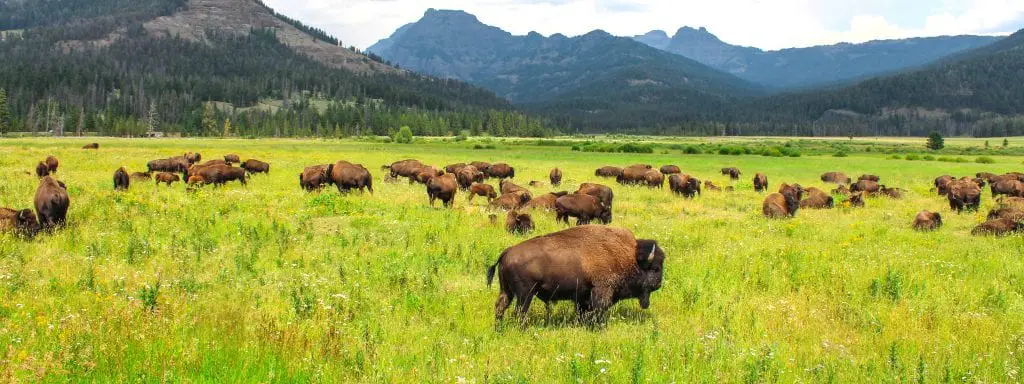
How To Photograph Hayden Valley
As with Lamar Valley you’ll want a wide lens to capture herds and a telephoto for individual bison you’ll see. Sunset or sunrise are the best times to visit as the wildlife is more active.
Parking In Hayden Valley
Parking is done roadside in pullouts along the valley. Be warned if the wildlife is active, there is likely to be a traffic jam in this area with people stopping in the road to look, or waiting for the bison to cross the street.
11. Mystic Falls
Mystic Falls is a 2.4 mile roundtrip hike to a beautiful 70 foot waterfall that should take a couple of hours.
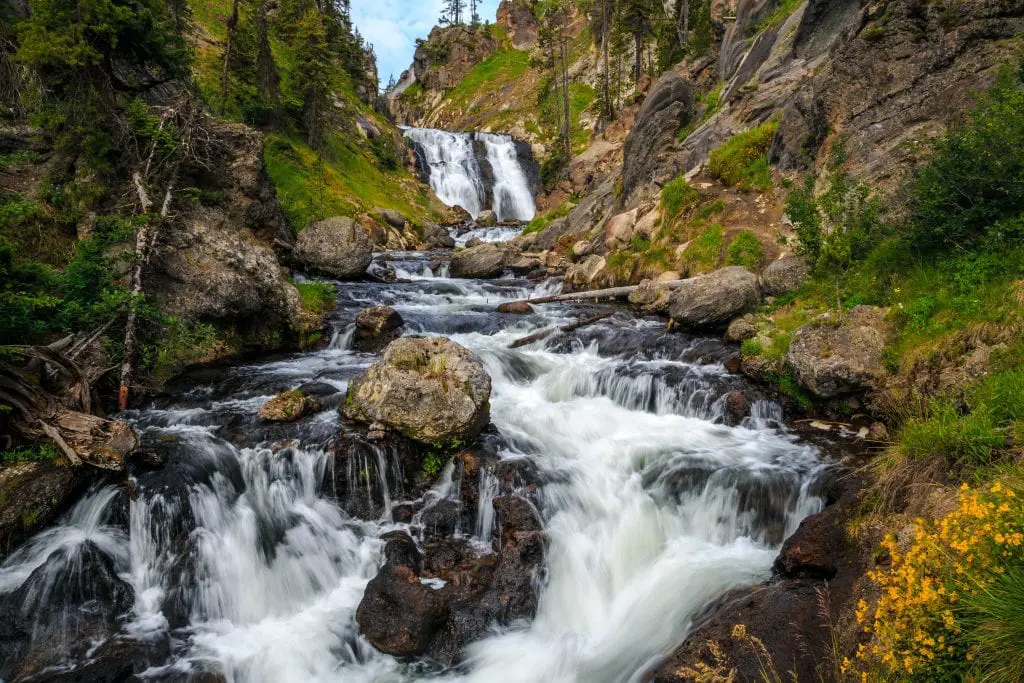
How To Photograph Mystic Falls
You’ll want a wide angle lens, 24 to 35mm to capture the falls. You’ll also need a tripod and a ND Filter to get the water to look silky in the falls.
Parking At Mystic Falls
Parking is easily done at Biscuit Basin
12. Fairy Falls
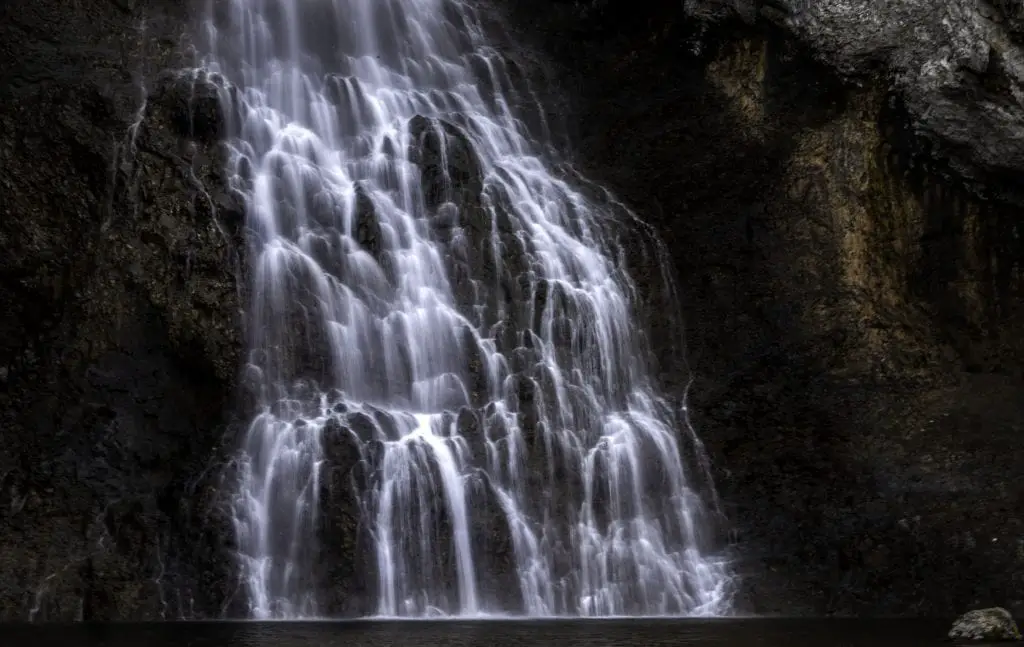
Fairy Falls is a 200 foot high waterfall in Yellowstone. It is reached via the trailed at the Fairy Falls parking lot, the same place as the Grand Prismatic Spring overlook. To get to the falls continue walking past the turn for the Grand Prismatic Spring overlook.
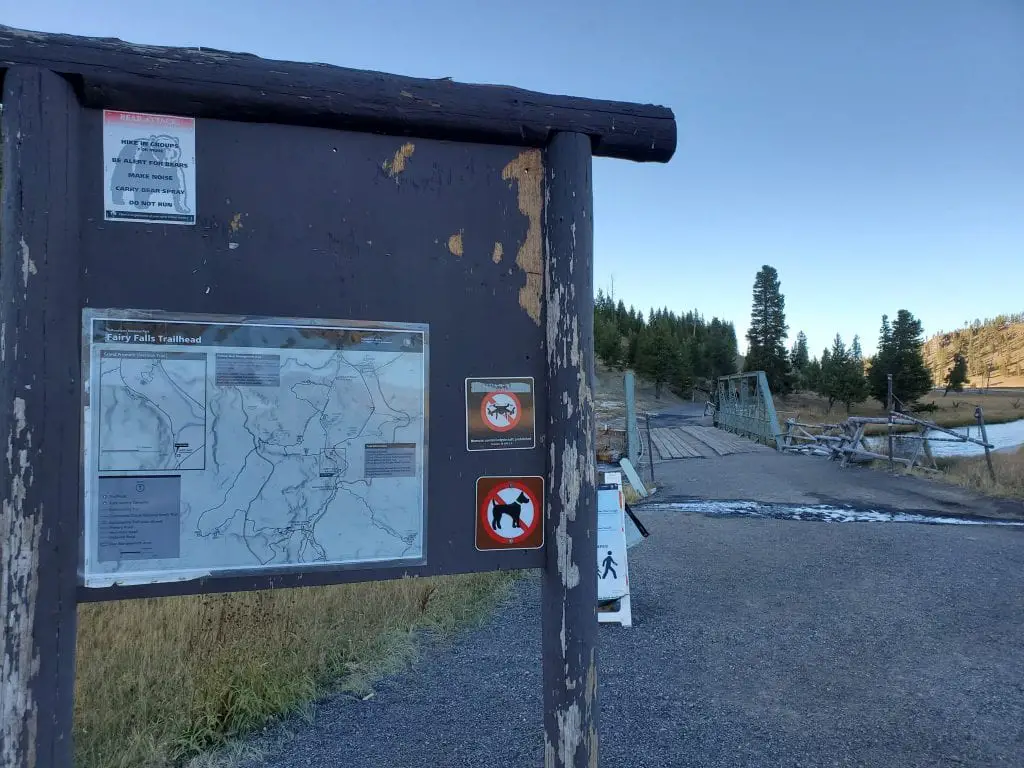
How To Photograph Fairy Falls
This is an interesting waterfall which is sometime better captured with a telephoto lens as in the picture above. You can also take a wide shot of the falls and include more foreground, but this view seems to be the most photogenic. You’ll want a telephoto lens, tripod and ND filter to pull off this shot!
Parking At Fairy Falls
Parking is the same lot as the Grand Prismatic Spring overlook mentioned above.
13. Imperial Geyser
After visiting Fairy Falls you can continue on to Imperial Geyser on the same trail which will add 1.2 miles to your hike.

Parking is done at the same place as Fairy Falls and the Grand Prismatic Spring overlook.
You’ll likely have this location to yourself, as it is a bit of a hike to get there, but the reward of being in this beautiful location in isolation is worth it!
14. Yellowstone Lake
Yellowstone lake is the largest lake at an elevation above 7,000 feet in North America. It is also easy to access and enjoy. It has 141 miles of shoreline and numerous pullouts that you can utilize to take pictures or have a picnic. Because of the freezing cold temperatures, you shouldn’t plan to swim in this lake.
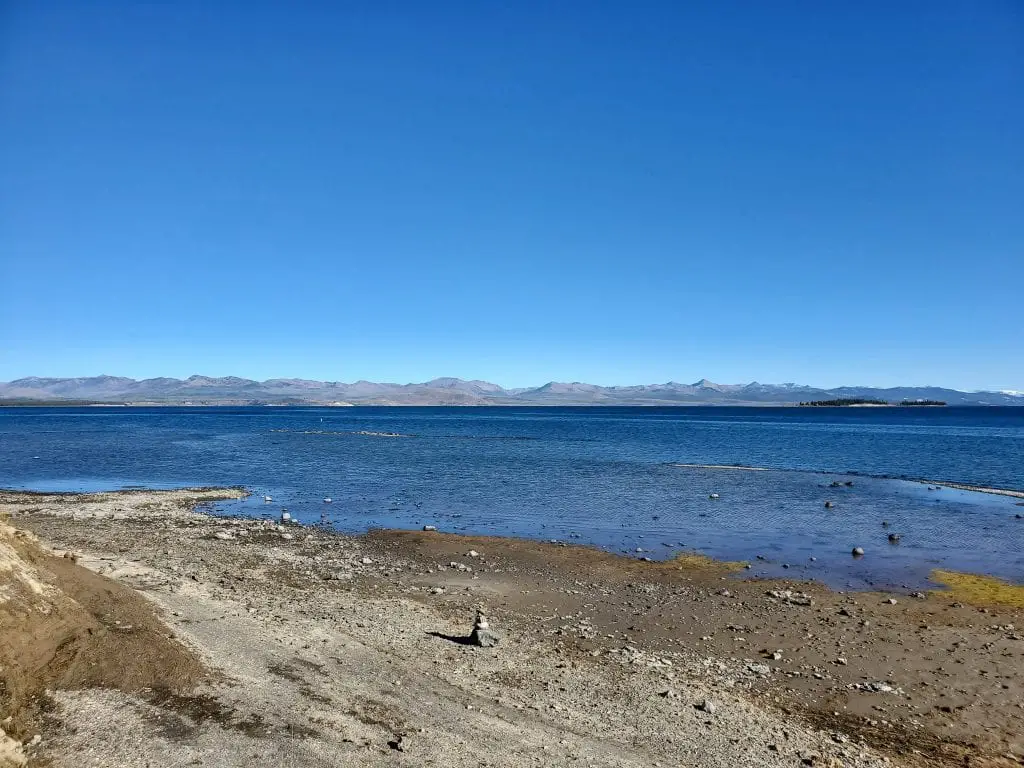
Yellowstone lake is best visited on the way to West Thumb. Parking and hiking are roadside as are the views.
Map of Yellowstone National Park Attractions
